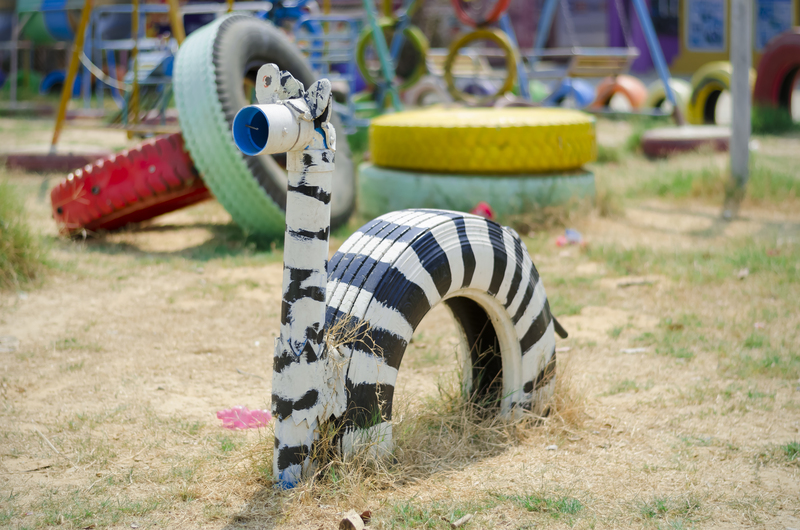Green Office Innovations: Elevating Recycling Practices
As sustainability rapidly transforms from a buzzword into a business imperative, forward-thinking companies are embracing green office innovations to elevate their recycling practices. Integrating eco-friendly strategies not only helps organizations meet their environmental responsibilities but also promotes a healthier, more engaging workplace for employees. This comprehensive guide explores the latest advancements and best practices for implementing powerful recycling solutions in modern office environments.

The Importance of Recycling in the Modern Office
Recycling in the workplace does far more than reduce waste sent to landfills. It reflects a company's commitment to environmental stewardship, influences employee morale, and improves corporate reputation. With an ever-increasing focus on green credentials from consumers, partners, and investors, adopting innovative recycling practices is no longer a choice--but a necessity.
- Reduces landfill waste: Office buildings generate significant amounts of paper, plastic, electronics, and more. Recycling dramatically cuts down on this waste.
- Conserves natural resources: Powerful recycling practices lower the demand for raw materials, which in turn conserves energy and reduces environmental impact.
- Improves health: Transitioning to greener operations often means cleaner air quality and less exposure to hazardous substances.
- Enhances employee engagement: Employees are more likely to feel fulfilled in a workplace that prioritizes ethics and sustainability.
- Financial benefits: Innovative recycling can reduce disposal costs and even generate revenue through the sale of recyclable materials.
Game-Changing Green Office Innovations
Upgrading your office's approach to waste management involves more than just placing a recycling bin in the break room. Here's how cutting-edge solutions and fresh thinking are elevating recycling practices in offices worldwide.
1. Smart Recycling Technology
Technology is at the forefront of modern green office solutions. From IoT-enabled bins to AI-powered waste sorting, these innovations transform traditional recycling systems into efficient, data-driven operations.
- Smart Bins: Features like fill-level sensors, automatic alerts, and interactive displays guide employees to recycle properly. These bins reduce contamination and ensure materials are disposed of correctly.
- Data Analytics: Integrated software tracks recycling rates and identifies trends, enabling facilities managers to adjust strategies and promote better practices.
- AI Waste Sorting: Some offices now use AI and robotics to automatically identify and sort recyclables, drastically reducing error rates and contamination.
2. Innovative Recycling Streams
Expanding beyond basic paper, plastic, and cardboard recycling, modern offices are recognizing the importance of recycling hard-to-handle materials.
- Electronic Waste (E-Waste): Offices frequently upgrade computers, printers, and phones. Secure, responsible e-waste recycling prevents hazardous materials from polluting the environment.
- Organics Recycling: Composting biodegradable waste like food scraps and coffee grounds diverts significant tonnage from landfills and creates nutrient-rich soil.
- Specialized Collection: Some organizations provide recycling options for batteries, ink cartridges, light bulbs, and even old office furniture.
3. Green Design and Office Layout
Introducing green office layouts and material choices can significantly decrease waste before it's produced. Thoughtfully designed spaces make sustainable practices second nature for employees.
- Centralized Waste Stations: Moving away from individual desk bins encourages team members to actively participate in waste separation, improving recycling rates and reducing contamination.
- Recycled & Recyclable Materials: Furnish office spaces with furniture and decor made from recycled materials and choose items that are themselves recyclable at the end of their lifecycle.
- Flexible, Modular Design: Opt for modular office furniture that can be easily reconfigured and reused, minimizing waste during renovations or expansions.
4. Circular Procurement Policies
Procurement practices are a key influence on an office's sustainability profile. Circular procurement prioritizes products designed for reuse, repair, or recycling at the end of their life, minimizing the need for new raw materials and reducing waste.
- Purchasing recycled goods: Make recycled paper, toner, and eco-friendly office supplies the default choice.
- Supplier partnerships: Work with manufacturers and vendors who practice take-back programs and offer products with minimal, recyclable packaging.
- Leasing over buying: Leasing equipment like printers or computers allows for easier upgrades and ensures components are properly recycled.
Employee Engagement: The Human Side of Recycling Innovation
State-of-the-art equipment and green office design can only take you so far--engaged employees are essential to making recycling practices successful. Fostering a culture of sustainability requires education, collaboration, and clear communication.
1. Effective Training and Communication
Ongoing education ensures everyone understands the why and how of your recycling program. Start with clear, visually appealing signage on all waste and recycling containers. Complement this with periodic workshops or digital training modules that explain both the impact and logistics of your workplace sustainability initiatives.
- Visual cues: Posters, infographics, and color-coded bins help employees make the right disposal choices.
- Incentivize participation: Reward programs, competitions, or simple recognition can drive enthusiastic involvement.
- Transparent reporting: Regularly share waste diversion statistics and success stories to keep staff motivated and informed.
2. Sustainability Champions and Green Teams
Empowering employees as sustainability ambassadors builds widespread ownership of recycling goals. Form a "Green Team" with representatives from different departments to champion new ideas and monitor recycling compliance. This group leads by example and becomes a powerful voice for change across your organization.
3. Feedback and Continual Improvement
Encourage an open feedback loop with all staff. Solicit ideas for improvement and address any barriers they encounter in participating in recycling programs. This agility allows for the refinement and expansion of your initiatives over time, ensuring that your green office innovations continue to deliver value.
Measuring and Celebrating Recycling Success
What gets measured gets managed. Utilize the data gathered via smart systems and regular waste audits to gauge the effectiveness of your strategies, identify areas for improvement, and set more ambitious targets moving forward.
Useful Key Metrics
- Recycling Diversion Rate: The percentage of total office waste sent to recycling or composting rather than landfill.
- Contamination Rate: The amount of non-recyclable material accidentally placed in recycling streams.
- Total Waste Generated: Track changes over time to assess the impact of waste-reduction campaigns and process improvements.
Share these results frequently throughout your organization. Celebrate milestones publicly--recognizing both the collective effort and individual contributions. This ongoing visibility not only strengthens commitment but also reinforces your brand's values to clients, partners, and future employees.
Case Studies: Offices Excelling in Green Recycling Innovations
For real-world inspiration, here's how some trailblazing companies are elevating their office recycling practices through innovation:
1. Google
Google's offices have adopted AI-powered waste bins that guide users in real-time, slashing cross-contamination rates. Their flexible furniture procurement model minimizes landfill disposal during renovations, and robust education campaigns keep their teams engaged and informed.
2. Interface
This global flooring manufacturer has pioneered "closed loop" systems where old carpet tiles are recycled into new ones. Office furniture is modular and recyclable, and organics are composted, helping to achieve near-zero waste at its headquarters.
3. WeWork
Shared workspaces like WeWork have introduced centralized waste sorting hubs with connected data-tracking, making it easy to monitor and improve site-wide recycling rates. They also collaborate with local partners for specialized recycling streams, from electronics to textiles.
Overcoming Challenges in Office Recycling
No journey to a zero-waste office is without obstacles. The most common barriers organizations face include:
- Contamination: Incorrect sorting can send even good recyclables to landfill.
- Lack of awareness: Employees may not understand what, where, or how to recycle in the office.
- Space limitations: Compact offices struggle to accommodate multiple recycling and composting stations.
- Cost concerns: Initial investment in smart technology or specialty recycling streams may seem high.
These challenges can be systematically addressed by targeted training, clear signage, flexible infrastructure, and calculated investments in technology--which typically pay for themselves through improved recycling rates, lower waste hauling fees, and enhanced corporate image.

Future Trends in Green Office Recycling Practices
The future of office recycling is being shaped by technological innovation, regulatory pressure, and growing environmental awareness. Key trends to watch include:
- Blockchain for transparency: Secure tracking systems certify the journey of recyclables from bin to final processing.
- Greater public-private partnerships: Collaborations between offices, local authorities, and recycling firms foster shared solutions for hard-to-recycle materials.
- Emphasis on "reuse" over "recycle": Office sharing programs for furniture and equipment maximize product lifespan before recycling becomes necessary.
- Carbon tracking integration: Waste management data is being integrated into broader sustainability and ESG reporting frameworks.
Conclusion: Building a Greener Future Through Office Recycling Innovation
Transitioning to innovative, eco-friendly office recycling practices is a powerful way for organizations to demonstrate leadership while improving efficiency, workplace morale, and environmental impact. By embracing smart technology, designing out waste, enlisting employees, and measuring progress, any office can reach new heights of sustainability. Ultimately, these green office innovations are more than operational enhancements--they are an investment in our planet's, and your business's, sustainable future.
Start elevating your office's recycling practices today and watch as the benefits extend from your bottom line to the communities and environment you depend on.